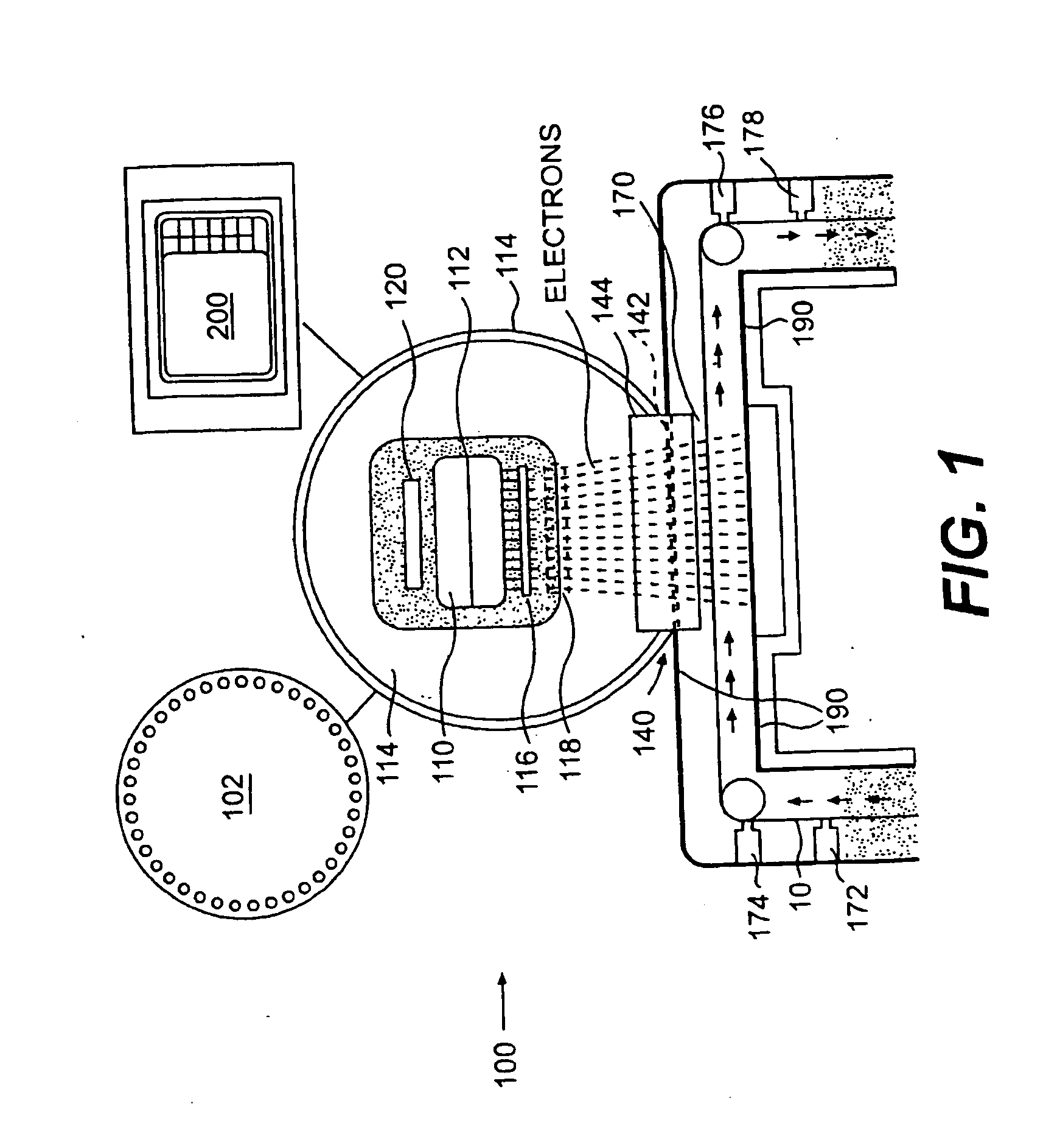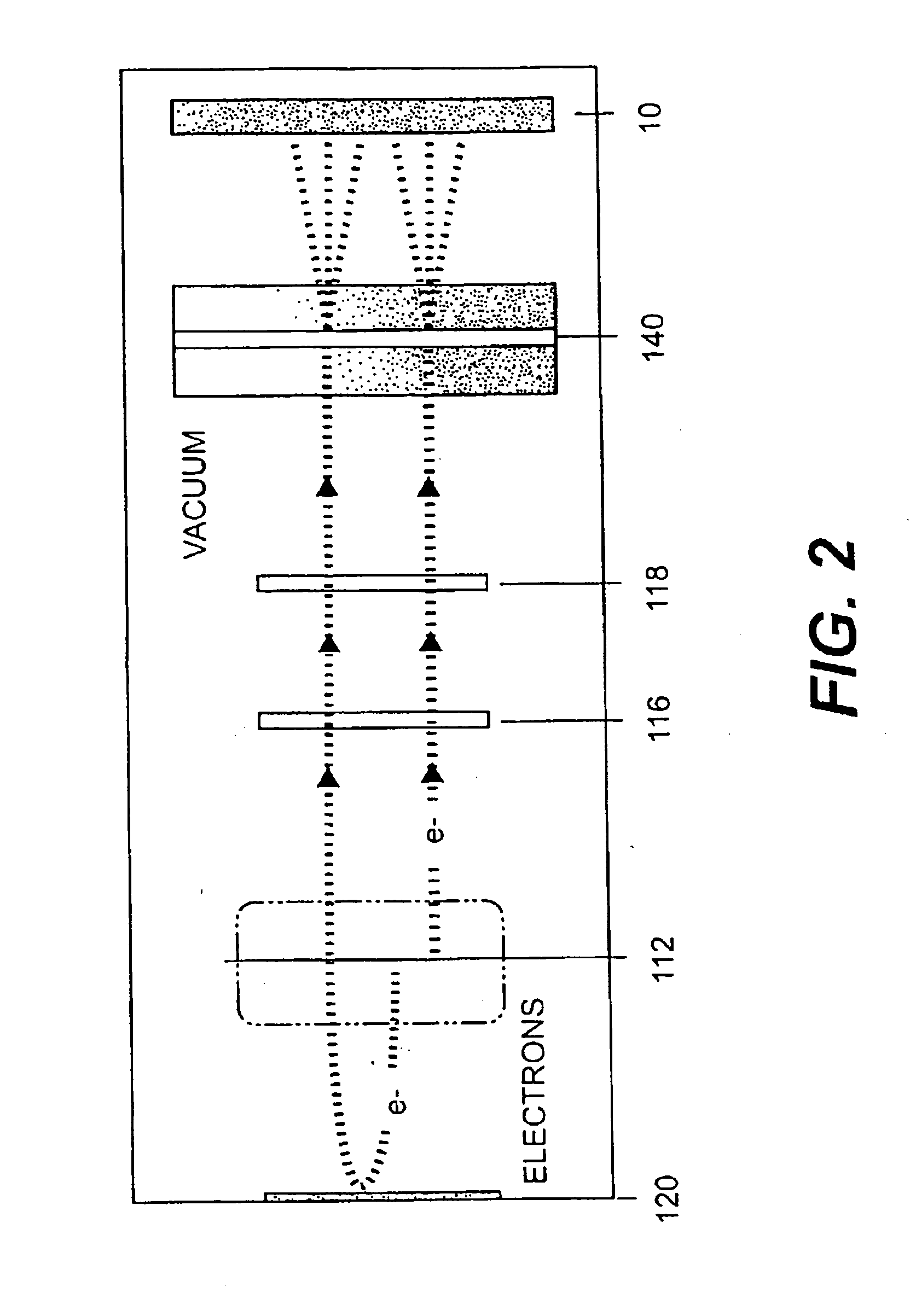Materials treatable by particle beam processing apparatus
- Summary
- Abstract
- Description
- Claims
- Application Information
AI Technical Summary
Benefits of technology
Problems solved by technology
Method used
Image
Examples
example 1
[0115] This Example provides a comparison of adhesion of an ink formulation without monomers (Ink 1) versus ink formulations comprising monomers at various concentrations (Ink 2, 3, and 4).
Ink 1
[0116] 10 grams of ink (Aqua Sun Cyan R3271-48B), as received from Sun Chemicals, was placed in a 250 ml beaker.
Ink 2
[0117] 10 grams of ink (Aqua Sun Cyan R3271-48B), as received from Sun Chemicals, was placed in a 250 ml beaker. 0.25 grams of polyethylene glycol 200 diacrylate (PEG-200 SR-259, Sartomer) was added to the beaker with stirring at room temperature, for a monomer concentration of 2.5%. There were no signs of phase separation or incompatibility between the monomer and ink.
Ink 3
[0118] 10 grams of ink (Aqua Sun Cyan R3271-48B), as received from Sun Chemicals, was placed in a 250 ml beaker. 0.50 grams of polyethylene glycol 200 diacrylate (PEG-200 SR-259) was added to the beaker with stirring at room temperature, for a monomer concentration of 5%. There were no signs of phas...
example 2
[0127] This Example describes the preparation of a film with a solvent-based ink.
[0128] 10 g of as received MOD Sealtech F-11 blue solvent based ink (Color Converting) was placed in a 250 mL beaker. To this ink, 0.5 g of 1,6-hexanedioldiacrylate (HDDA, Sartormer Chemicals) was added with stirring. The HDDA went into solution with no indication of phase separation. The beaker was covered with a layer of 1.0 mil aluminum foil and allowed to stand overnight at room temperature. No phase separation or increase in viscosity was observed for the ink+HDDA formulation.
Sample 9
[0129] A 48 gauge acrylic coated PET film was coated with the ink+HDDA formulation by a hand roller method. The film was air-dried. An EB OPV (Sovereign Specialty Chemicals EB 1044-E) was coated on the dried ink. The OPV was EB treated at 110 kV and 3 Mrads under inert conditions.
[0130] The coating cured well on the ink. It was then subjected to a Scotch tape and 3M 610 tape test. The ink and the coating adhered v...
example 3
[0131] This Example demonstrates the value of an electron beam curable monomer added to a conventional water based ink used for laminating adhesives.
[0132] A typical laminate used in the flexible food packaging industry is of the type as shown in Table II, below.
TABLE IITOP FILM 0.5 mil polyester (PET):17.0 grams\m2Ink (Solvent or water based): 3.0 grams\m2EB curable laminating adhesive (lacquer): 3.0 grams\m2Sealant of Polyethylene copolymer (PE):40.0 grams\m2
Sample 10
[0133] Ink 1 from Example 1 was applied to a 48 gauge acrylic coated PET film by the roller method. The film was then air dried. An EB laminating adhesive (#76R, Liofol) was applied to the dry ink by a Myer rod at a coat weight of about 3.0 g / m2. The bottom film, comprising 175 gauge polyethylene (Pliant) was then laminated to it. The EB adhesive was cured using ESI EB unit operating at 110 kV and 3 Mrads of dose with the PET film exposed to the beam.
Sample 11
[0134] Ink 3 from Example 1 was applied to a 48 gau...
PUM
| Property | Measurement | Unit |
|---|---|---|
| Time | aaaaa | aaaaa |
| Thickness | aaaaa | aaaaa |
| Molecular weight | aaaaa | aaaaa |
Abstract
Description
Claims
Application Information
 Login to View More
Login to View More - R&D
- Intellectual Property
- Life Sciences
- Materials
- Tech Scout
- Unparalleled Data Quality
- Higher Quality Content
- 60% Fewer Hallucinations
Browse by: Latest US Patents, China's latest patents, Technical Efficacy Thesaurus, Application Domain, Technology Topic, Popular Technical Reports.
© 2025 PatSnap. All rights reserved.Legal|Privacy policy|Modern Slavery Act Transparency Statement|Sitemap|About US| Contact US: help@patsnap.com


